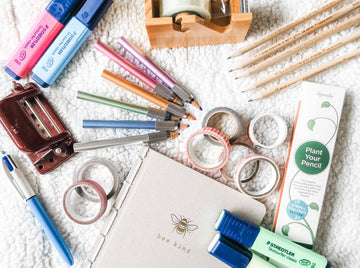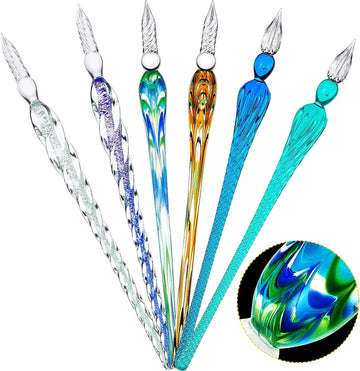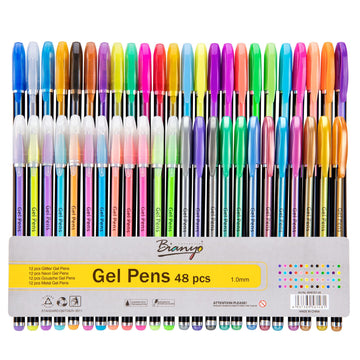
What Are Pens? History, Types, Parts, and Uses
Introduction
Pens are more than just writing instruments; they are conduits of creativity, communication, and personal expression. From the earliest quills to the modern-day ballpoint, pens have evolved significantly, adapting to the changing needs of society. This article delves into the fascinating history of pens, explores the various types available today, examines their key components, and highlights their myriad uses.
1. What Is a Pen? (Definition)
At its core, a pen is a tool designed to apply ink to a surface, typically paper, to create text or drawings. This simple yet profound function has made pens indispensable in countless aspects of human life, from education and business to art and personal correspondence.
2. A Short History of Pens
The journey of the pen began thousands of years ago with primitive writing tools like reeds and feathers dipped in ink. The quill pen, derived from bird feathers, became prominent around the 6th century and remained in use until the 19th century. The quest for a more efficient writing instrument led to the invention of the fountain pen in 1884, featuring an internal ink reservoir that eliminated the need for frequent dipping.
The 20th century witnessed further innovations with the introduction of the ballpoint pen in the 1940s. Its oil-based ink and rotating ball mechanism offered convenience and reliability, making it a staple in offices and schools worldwide. Subsequent decades brought us gel pens with their vibrant, water-based ink and rollerball pens that combined the smoothness of fountain pens with the convenience of ballpoints.

3. Types of Pens
Today, the market offers a diverse array of pens, each catering to specific needs and preferences.
-
Ballpoint Pens: Known for their quick-drying, oil-based ink, ballpoint pens are durable and versatile, suitable for everyday use.
-
Gel Pens: With their water-based gel ink, gel pens produce vivid colors and smooth lines, making them popular for creative writing and art.
-
Rollerball Pens: These pens use a water-based or gel ink that flows freely, providing a fluid writing experience akin to fountain pens.
-
Fountain Pens: Emblematic of elegance and sophistication, fountain pens use liquid ink and a nib for a classic writing experience, often favored by pen enthusiasts.
-
Marker Pens: Available in various tip sizes and ink types, markers are ideal for bold writing, coloring, and artistic applications.
4. How Pens Work
The functionality of a pen is determined by its ink type and delivery mechanism.
-
Ballpoint Pens use a small rotating ball at the tip to dispense oil-based ink onto the paper, ensuring consistent flow and quick-drying properties.
-
Gel Pens: Gel ink, thicker and more opaque than traditional inks, flows smoothly from the nib, creating vibrant lines with minimal smudging.
-
Rollerball Pens: Utilizing water-based or gel ink, rollerball pens offer a fluid writing experience with a balance between smoothness and precision.
-
Fountain Pens: The nib, often made of metal, allows liquid ink to flow onto the paper, providing a tactile and expressive writing experience.
5. Key Parts of a Pen
A pen’s design is a harmonious blend of form and function, comprising several essential components:
-
Tip/Nib: The part that comes into contact with the paper, determining the line quality and ink flow.
-
Barrel: The main body of the pen, which houses the ink reservoir and can be made from various materials for different aesthetics and durability.
-
Grip: A comfortable section designed to fit comfortably in the hand, reducing fatigue during extended use.
-
Cap: Protects the tip when not in use and prevents ink from drying out or staining other surfaces.
-
Clip: Allows the pen to be attached to pockets, notebooks, or other items for easy portability.
6. Common Uses of Pens
Pens play a vital role in numerous aspects of daily life:
-
Writing: Whether jotting down notes, signing documents, or composing letters, pens remain the go-to tool for written communication.
-
Art and Creativity: Artists and designers utilize pens—especially gel pens and fountain pens—for sketching, drawing, and adding intricate details to their work.
-
Education: Students rely on pens for taking notes, completing assignments, and participating in exams.
-
Marketing and Branding: Customized pens serve as effective promotional tools, bearing company logos and messages.
7. Why Pens Still Matter
In an increasingly digital world, the significance of pens endures:
-
Personal Touch: Handwritten notes and signatures convey sincerity and authenticity that digital communication often lacks.
-
Reliability: Pens do not require batteries or an internet connection, ensuring they are always ready for use.
-
Versatility: With a wide range of styles and ink types available—from ballpoint to fountain and gel pens—pens can adapt to various writing tasks and preferences.
8. FAQs
-
What defines a pen, and why is it important?
A pen is a tool that applies ink to surfaces for writing or drawing. Its importance lies in its ability to facilitate communication, creativity, and personal expression. -
How do different types of pens work?
Each pen type operates on unique principles related to ink composition and delivery mechanisms, affecting factors like flow, drying time, and line quality. -
What are promotional pens?
Promotional pens are customized writing instruments imprinted with company logos or messages, used as marketing tools to enhance brand visibility. -
Can you explain the difference between gel pen and rollerball pen?
Gel pens use thick, opaque gel ink that provides vibrant colors and smooth writing, while rollerball pens utilize liquid or water-based ink for a fluid feel closer to fountain pens. -
Is there any special care needed for fountain pens?
Yes, fountain pens require gentle handling to maintain their nibs. Regular cleaning and proper ink storage are essential to prevent clogging and ensure optimal performance. -
How can I prevent my pen from bleeding onto my notebook paper?
Using ballpoint or oil-based ink pens can help minimize bleeding due to their quick-drying properties. Additionally, choosing papers designed for fountain pens can reduce feathering and bleeding.
Conclusion
Pens are more than mere writing tools; they are extensions of our thoughts and expressions. Their rich history, diverse types, intricate parts, and versatile uses underscore their enduring relevance in our lives. Whether you’re jotting down a quick note, creating a masterpiece, or signing an important document, the right pen can make all the difference.



